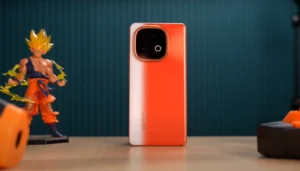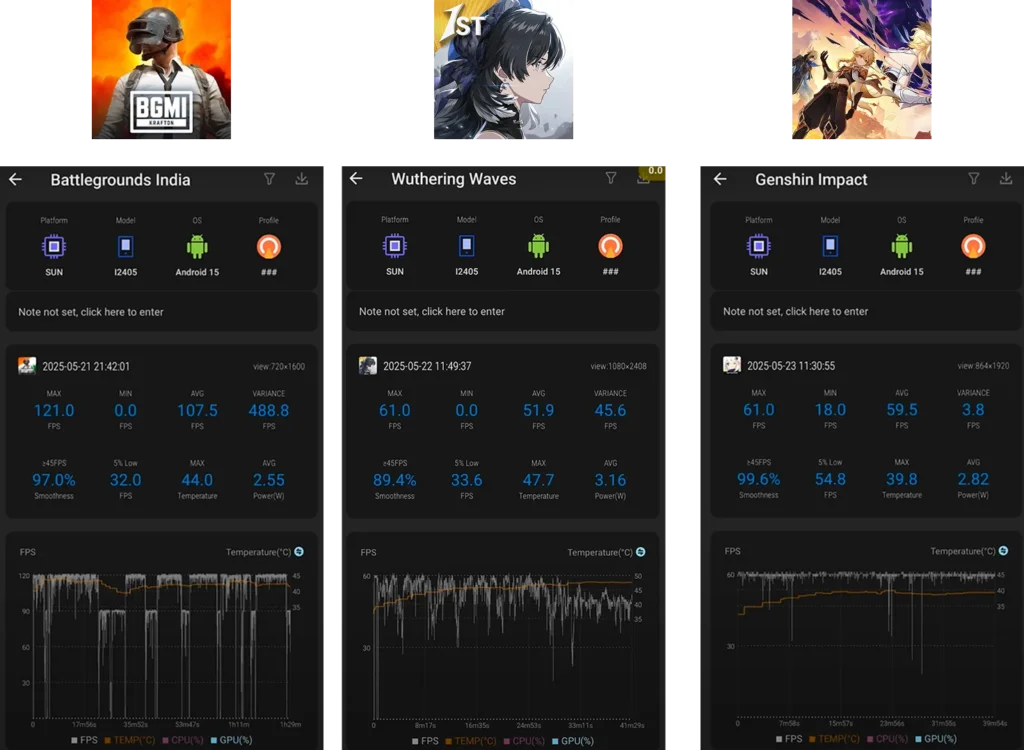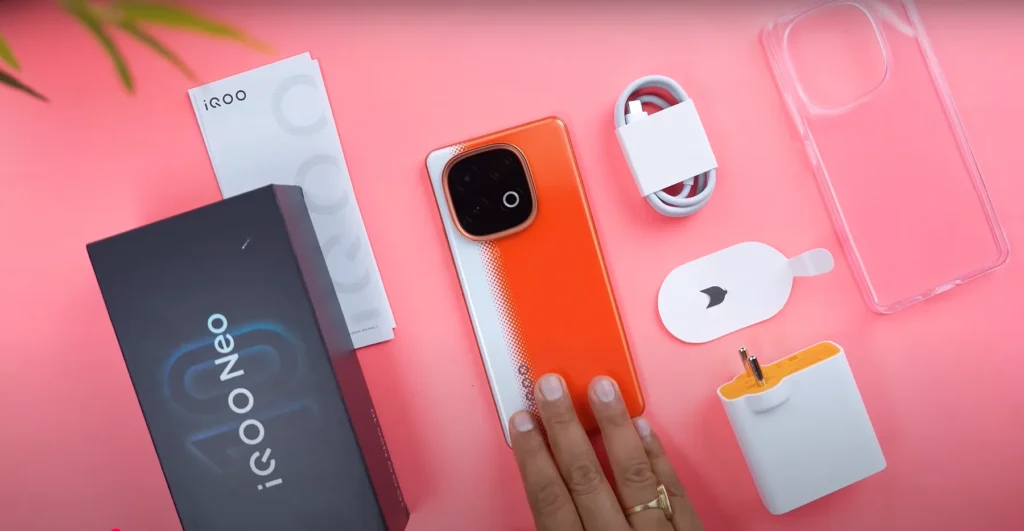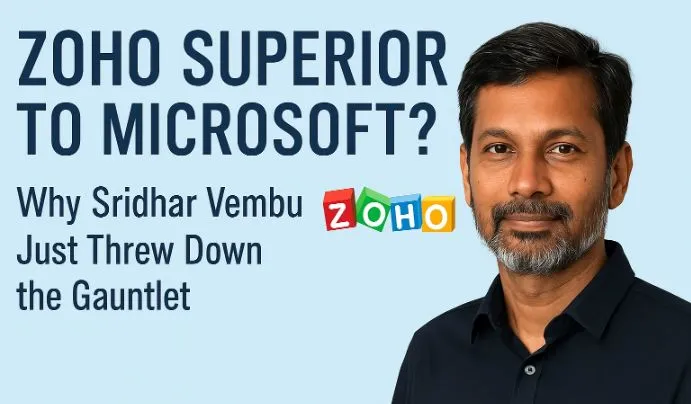Alright, let’s be real for a second the iQOO Neo 10 isn’t just a spec-dump phone. It’s a punchy, no-nonsense, power-user delight that’s clearly trying to shake up the mid-premium segment. Priced around ₹31,999 in India, this is for folks who want top-tier performance, solid cameras, and crazy-fast charging without selling a kidney.
Now, having reviewed iQOO phones since their Neo 3 days, I can tell you one thing: these guys know how to tune performance without killing your battery or jamming unnecessary gimmicks. The Neo 10 continues that legacy with some slick upgrades, including a Snapdragon 8 Gen 4 chip, 120W charging, and a camera that (finally) steps up in meaningful ways.
So, who’s this phone for? Gamers, multitaskers, binge-watchers, and honestly, anyone who wants a flagship feel under ₹35K.

iQOO Neo 10 Review: Flagship Power Under ₹35K

Snapdragon 8 Gen 2, 120W charging, great camera. The iQOO Neo 10 redefines mid-premium, offering top-tier performance for less. A true power-user delight.
4.4
Pros
Cons
Design & Display: Sleek, Bold & Surprisingly Premium
First impressions? It’s a solid chunk of tech that feels more expensive than it is. My unit in Fiery Orange vegan leather (yes, leather!) felt fantastic in-hand warm, grippy, and nothing like those fingerprint-magnet glass backs we’re used to. There’s also a classic Black variant for the minimalists.
The display? A 6.78-inch 1.5K AMOLED with 144Hz refresh rate and up to 3000 nits peak brightness. No joke, this thing is bright enough to make your retinas do a double take on sunny afternoons. Colors are rich, HDR10+ content looks stunning, and touch response is butter-smooth, exactly what gamers and scrollers want.
Stereo speakers are loud, punchy, and great for Netflix or BGMI. And the haptics? Clicky and tight. Not flagship-grade, but well above average at this price.
Camera System: It’s No OnePlus 12R, But It’s Surprisingly Good
Now, iQOO hasn’t historically been known for great cameras; they’ve been “good enough” at best. But with the Neo 10, I’m happy to say things are looking up.
- Main Camera: 50MP Sony IMX920 sensor with OIS
- Secondary: 8MP ultra-wide (meh, as expected)
- Front: 16MP selfie shooter
Daylight shots? Crisp, punchy, and finally balanced in dynamic range. The main sensor now competes decently with the Realme GT 7 Pro in sharpness, and even manages better contrast in certain shots.
Low light? It’s a mixed bag. It handles ambient light better than its predecessor, but don’t expect Pixel 8 levels of magic. Night Mode helps, but detail suffers a bit when zoomed in.
Video? Shoots up to 4K 60fps, and stabilization is rock-solid thanks to the OIS + EIS combo. Vloggers and casual creators will be happy.
Performance & Software: This Thing Flies!
This is where the iQOO Neo 10 really flexes. Under the hood, it’s rocking the Snapdragon 8 Gen 4, paired with up to 16GB LPDDR5X RAM and UFS 4.0 storage. In plain English: it’s stupid fast.
I threw everything at it: Genshin Impact, Chrome with 30 tabs, Lightroom editing and this phone didn’t break a sweat. Sustained performance is solid, with minimal thermal throttling thanks to a large vapor chamber and smart thermal control.
Funtouch OS 15 (on Android 15) has come a long way. It’s still not my favorite UI, but the animations are smoother, there’s less bloatware (though not zero), and system-wide optimization is tight. iQOO promises 3 years of major Android updates and 4 years of security patches, which is respectable.

Benchmark Scores & Real-World Heat Test
In terms of benchmarks, the iQOO Neo 10 scored around 2,122,000, which puts it well into flagship-killer territory not something you see often under ₹35K. Over on Geekbench 6, I got a single-core score of around 2222 and a multi-core score close to 7370, which speaks volumes about its day-to-day speed and multitasking muscle. These aren’t just numbers they translate to real-world snappiness whether you’re gaming, editing, or juggling apps like a pro. If you’re the type who judges phones by performance sheets, this one definitely passes the test.

Battery Life & Charging: Zoom Zoom
5000mAh battery + 120W FlashCharge = insane combo.
I routinely got 6.5 to 7 hours of screen-on time, even with heavy gaming and 5G usage. For light users? This thing can easily stretch into a day and a half.
And that 120W charger? Blazing. It took me from 0 to 100% in just under 26 minutes. Perfect for morning rush, airport gate waits, or late-night “oops, I forgot to charge” moments.
What’s in the Box?

One thing I love about iQOO they don’t cheap out on the unboxing experience:
- 120W FlashCharge adapter
- USB-C cable
- TPU case
- SIM ejector
- Pre-applied screen protector
That charger alone would cost you ₹3,000+ if sold separately. Props for including it.
Unique Features & Ecosystem Perks
- Q1 Gaming Chip (dedicated for frame interpolation and stable FPS) – yes, it works, especially noticeable in Genshin and CoD Mobile.
- AI Night Vision & AI Shutter Optimization – helpful, not gimmicky. It learns your shooting patterns.
- In-display fingerprint sensor – fast and reliable.
Sadly, there’s no wireless charging, but hey something’s gotta give at this price point. It does, however, come with an IP65 rating for dust and splash resistance.
Compared to the Competition
Let’s pit it quickly against the usual suspects:
| Phone | Camera | Chipset | Charging | Price |
| iQOO Neo 10 | 50MP Sony IMX920 | Snapdragon 8 Gen 4 | 120W | ₹31,999 |
| Realme GT 7 | 50MP + IMX882 | Dimensity 9200+ | 100W | ₹32,999 |
| OnePlus 13R | 50MP IMX890 | Snapdragon 8 Gen 2 | 100W | ₹39,999 |
The Neo 10 hits that performance + charging + price sweet spot better than the rest. If camera’s your top priority, maybe the OnePlus 13R edges it out slightly. But overall value? iQOO wins this round.
The Verdict: Should You Buy the iQOO Neo 10?
If you want a beast of a phone that doesn’t cost a fortune the iQOO Neo 10 is an easy recommendation. It delivers where it counts: speed, battery, and display. And finally, cameras aren’t a compromise. What are your thoughts on the iQOO Neo 10. Let me know in the comments below!

















Leave a Reply
You must be logged in to post a comment.